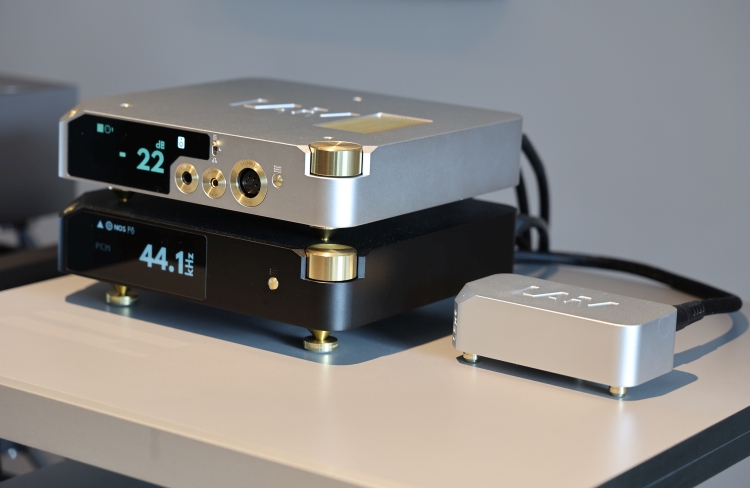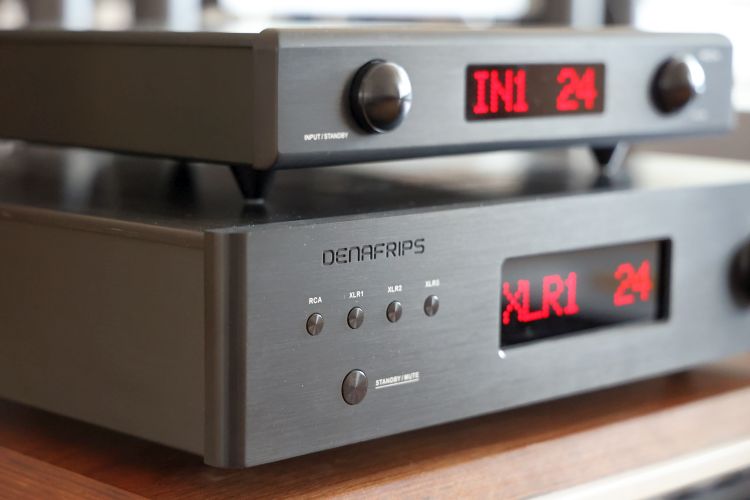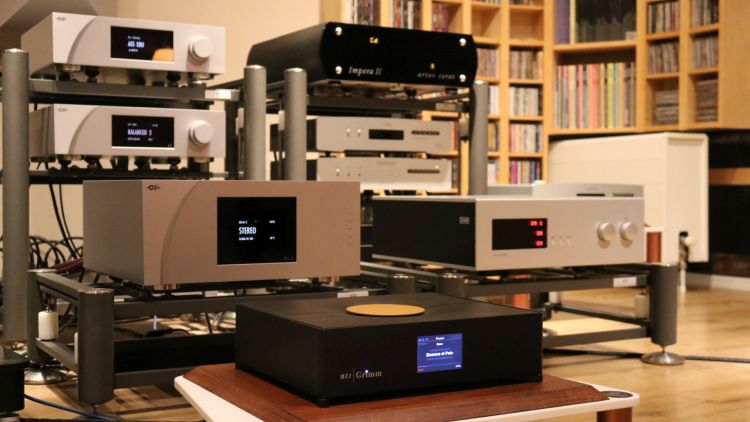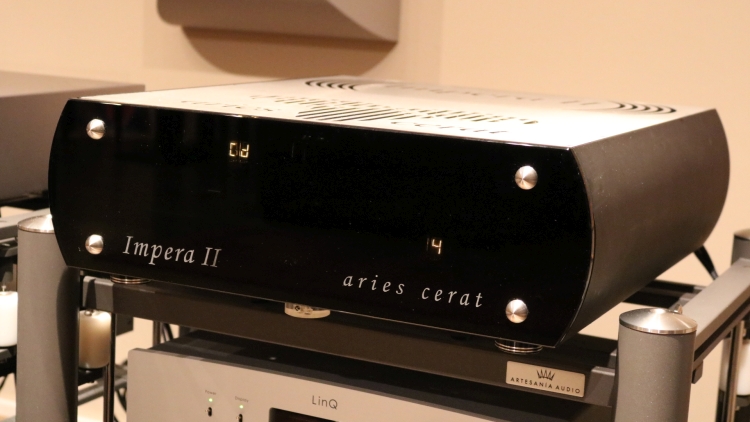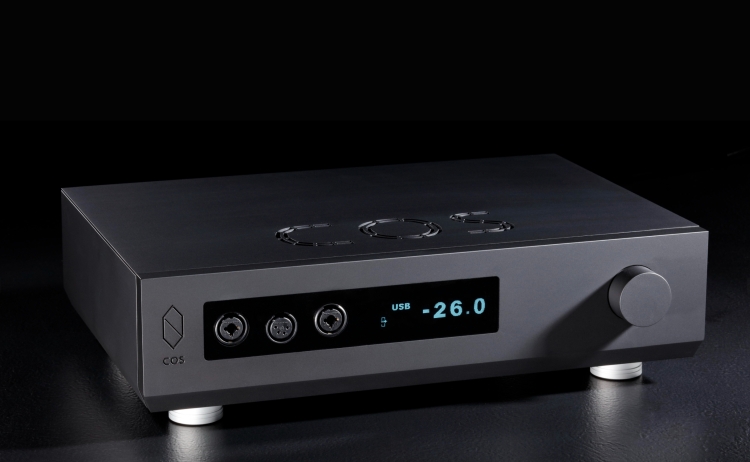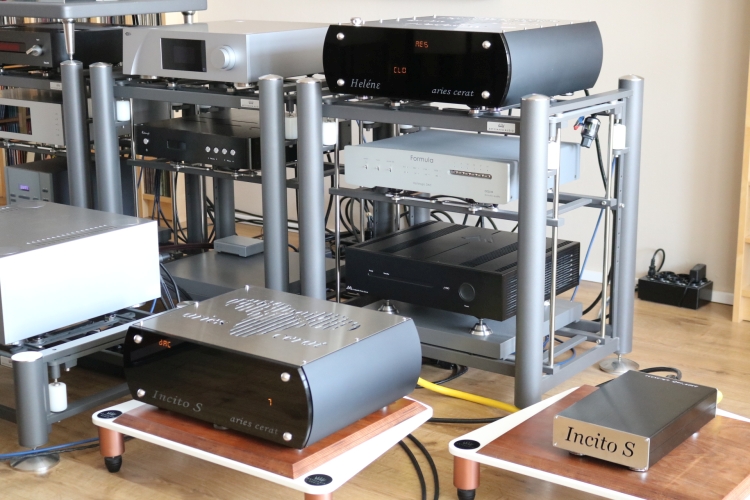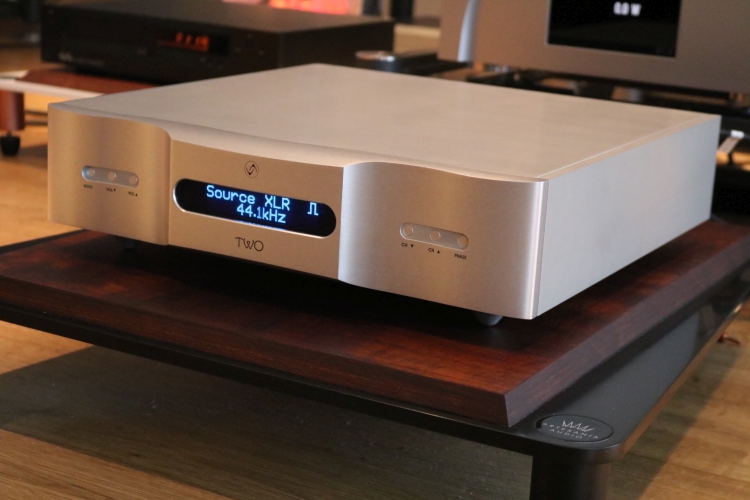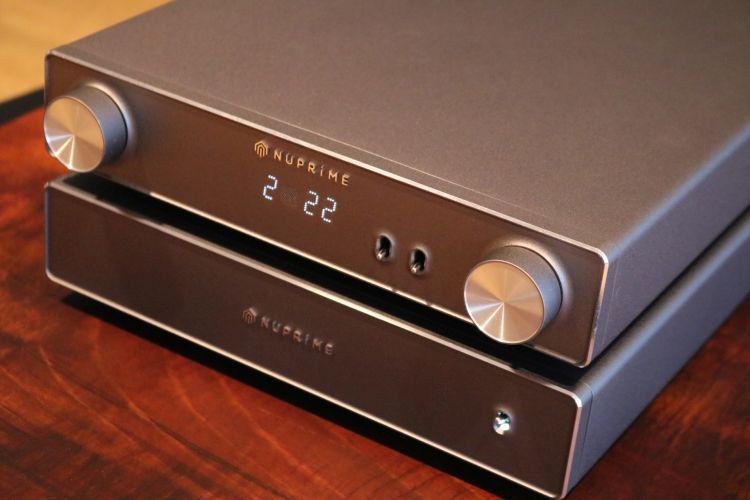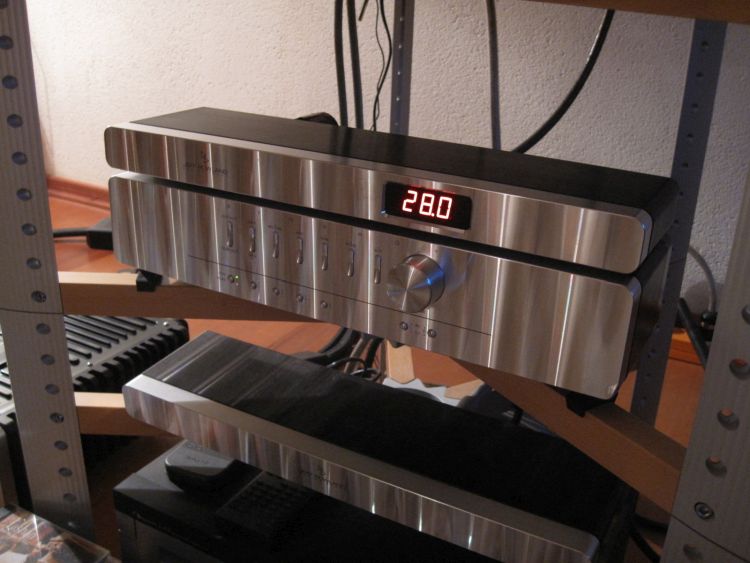
Briefly available between Synergy 1 and 2i, the Synergy 2 is a rare beast. How does it compare?
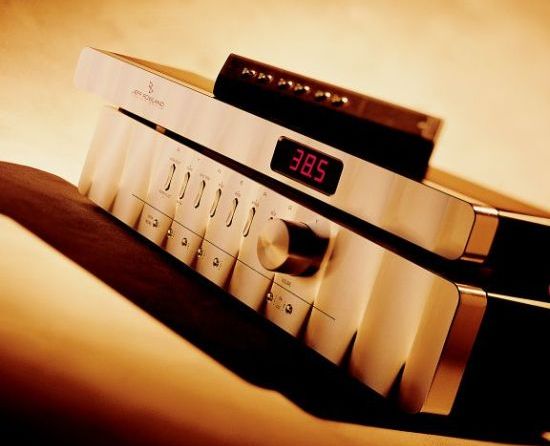
The Synergy 2 wasn’t in production for very long: it was only available between 1997-2000. I have heard and owned both the 1 and the 2i but the 2 (without i) is apparently pretty rare. The main question on my mind was how it would compare to its successor the 2i.
History
My first Rowland preamp was a Consonance. This is when my now closest friend and listening buddy, JW infected me with the High End upgrade virus. I always wanted a Synergy but couldn’t afford one. Nevertheless I was happy with the Consonance for a long time. At some stage I tried the Synergy 2i but my setup at the time (B&W N804’s) didn’t accommodate it well enough so I returned to the Consonance for the time being. I tried Levinson as well as playing without preamp (dCS/Wadia) and at some stage I came across a good deal for the Synergy 1 and went for it. It wasn’t until after connection that it became clear that the 1 is a different animal than the 2i: much more articulate and tight and also more upbeat. The price to pay was a less sunny, less silky-smooth sound as well as less resolving power and treble air. But it fit well in my setup at that time and I stuck with the 1 for a long time.
In the meantime, JW had purchsed a Synergy 2i and was very happy with it. We also brought his preamp along to friends who were always surprised at how much better the Synergy was than their own preamps. Two of them also bought a Synergy.
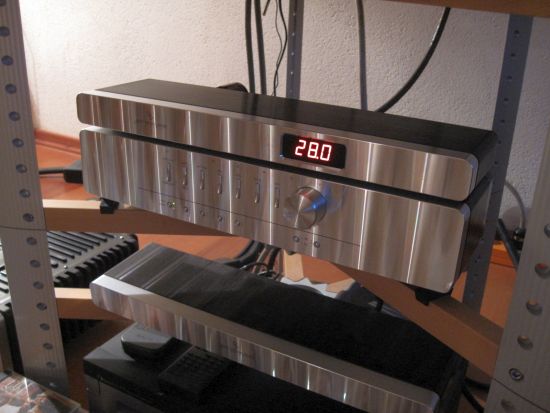
Above: Synergy 2, below: Synergy 2i
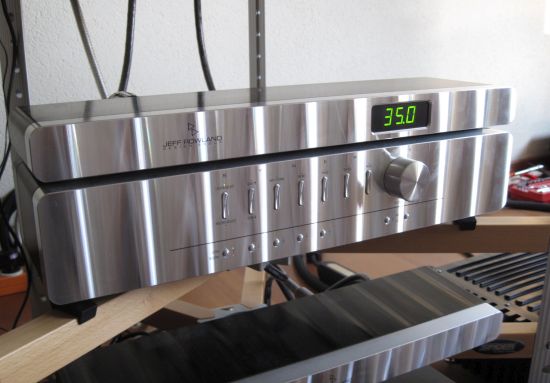
It wasn’t until the test that you are reading now, that it became clear that the different silver-coloured capacitors in JW’s Synergy 2i (done by previous owner, possibly part of a repair or as an upgrade) also sound very different to the stock ones.
Differences
All Synergy models have the same front panel, the same buttons and the same dimensions. The rear is different between 1 and 2/2i and the insides also differ. Still, there are more similarities than differences. You can read all specifics in the JRDG Knowledge Database but below is a short overview.
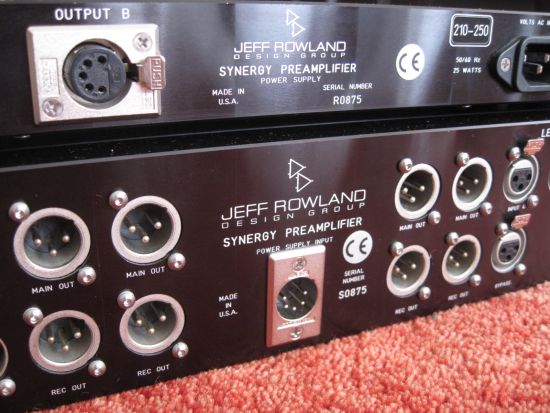 Above: Synergy 2, indicated on the back plate as simply “Synergy”.
Above: Synergy 2, indicated on the back plate as simply “Synergy”.

Above: Synergy 1 inside
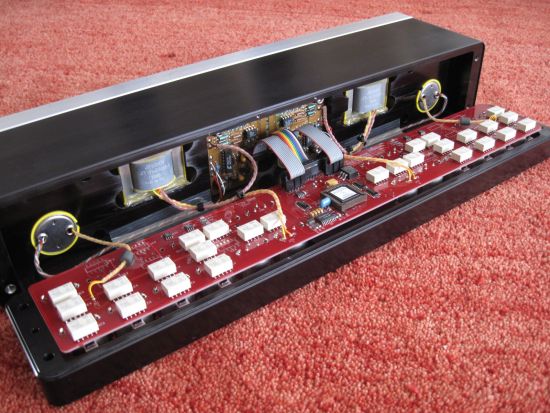
Above: Synergy 2 inside
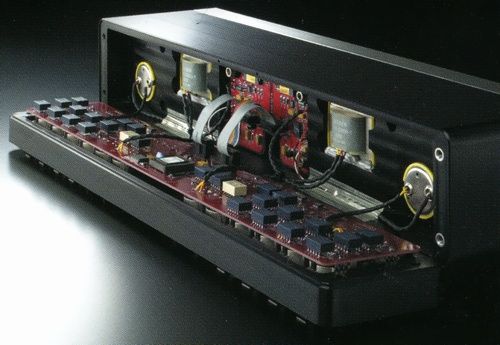
Above: Synergy 2i inside
Synergy 1
Red display
Input transformers
single set of outputs and record outputs
Synergy 2
Red display
Input- and output transformers
double set of outputs and record outputs
very similar preamp circuit board (only minor differences)
Synergy 2i
Green or Blue display
Input- and output transformers
double set of outputs and record outputs
Newly designed red-coloured SMD preamp circuit board
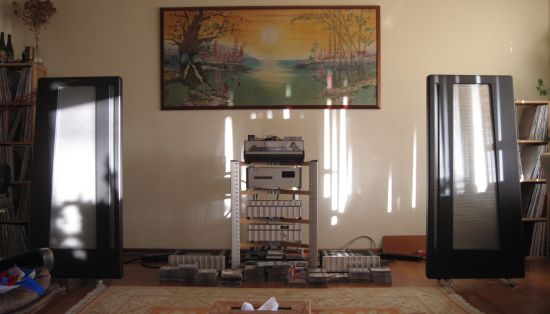
Listening tests
When compared directly, the Synergy 2 and 2i are more alike than either model compared to the Synergy 1. However, please keep in mind also that we are comparing a Synergy 2i with modified power supply to an unmodified Synergy 2. Later on I will further investigate but leaving that matter aside for now, the difference between these Synergy 2 and 2i models is mainly focused on timbre and colour. The Synergy 2i excells in articulation, speed, transients and transparency. It can however also be a little dry compared to the Synergy 2. The Synergy 2 excells in bass power, smoothness and full tonality. It can however be a little too smooth and too relaxed. Because of these character traits, the Synergy 2i is best set up on compliant (rubber) feet while the Synergy 2 benefits from hard couplers (Ceraballs on a Spider Rack).
Power Supply Swapping
Because all Synergy power supplies are compatible, we now had the chance to listen to a stock Synergy 2i, as well as to find out how much different the supplies are, simply by means of swapping the power supplies.
Synergy 2 with Synergy 2i power supply
The Synergy 2i power supply matched very well with the Synergy 2, making it livelier, more articulate and more upbeat while maintaining its gloriously rich tonality. Adding Ceraballs completed the matter and we were overall very content with the sound. JW was even more charmed by this sound due to its richer tonality.
Synergy 2i with Synergy 2 power supply
Turning the story around, using the Synergy 2’s power supply with JW’s Synergy 2i, the sound moved much closer toward the sound of the Synergy 2. Bass became fuller, midrange more relaxed, overall it was a lot smoother, much more like I remembered my own Synergy 2i to sound. And just like I remembered the problems fitting in my own Synergy 2i, here too, we found the result to be a little bit too much on the smooth side. Fitting Ceraballs did help, but not enough and overall, in spite of the richer tonality, somehow its partnering (modified) power supply made a better match.
Synergy 2 compared to Coherence II
Touching briefly on my own reference preamp, the Coherence II, I’d say that this model combines all aspects best. It doesn’t have the superb treble fluidity and low level resolution as the Synergy 2i but it is still way more fluid and finely resolving than any other preamp that I have had in my system. But importantly, the Coherence II manages to sound fast, dynamic and articulate and at the same time offering very full tonality and a luxurious creamy-rich timbre. A lot of this, I think, has to do with its very beefy power supply and also with the BPS section.
Conclusion
All Synergy’s are highly resolving, very refined and natural sounding preamps. They are all very smooth and fluid but the Synergy 1 is tighter and more articulate than 2 and 2i. Synergy 2 and 2i really need to be set up on a fast-sounding equipment rack, such as a Finite Elemente Spider with Ceraballs substituting the standard rubber Spider feet. In a blind test you would perhaps not be able to tell much if any difference between a stock Synergy 2 and a stock Synergy 2i. The capacitor change in JW’s Synergy 2i however makes for an astoundingly large difference, but this change makes it sound closer to the Synergy 1 than the stock model. In conclusion you could say that the Synergy 2 and 2i both are a little bit too smooth in absolute terms but can be embedded well with proper care. How different this is for the new Corus preamp: it is much closer to the Synergy 1 in terms of speed and articulation but it also offers the Synergy 2i’s superb treble air and low level detailing and combines this with a hitherto forth unheard of purity and neutrality. The Corus even sounds so very neutral that you could argue that Rowland have now gone in the other direction making it necessary to use warm-sounding equipment in order to bed it in well.
Lastly: please note that my observations need not be typical for all Synergy models. On two occasions I have heard two identical models sound different and upon internal inspection found subtle differences. Within production runs apparenly sometimes changes were made. Also, the age of the components comes into play: this definitely is not a rule set in stone, but older capacitors can start to sound slower than new ones.
